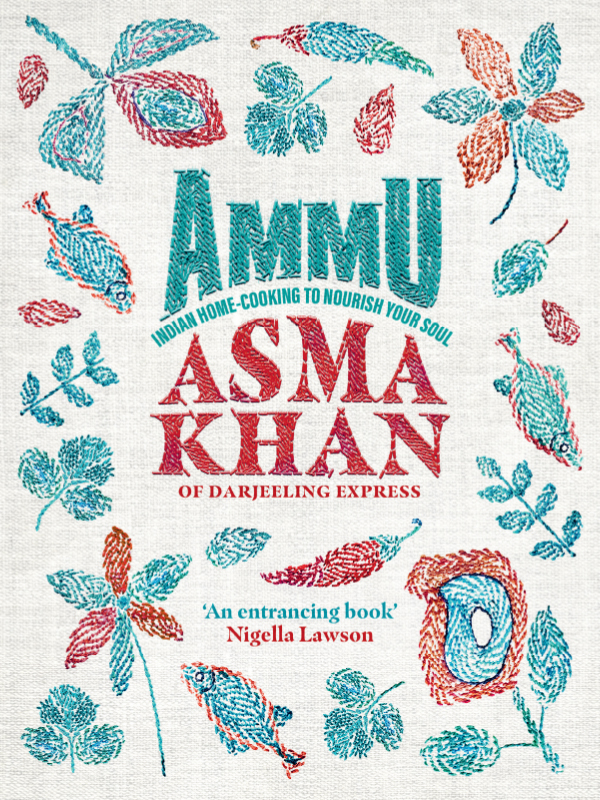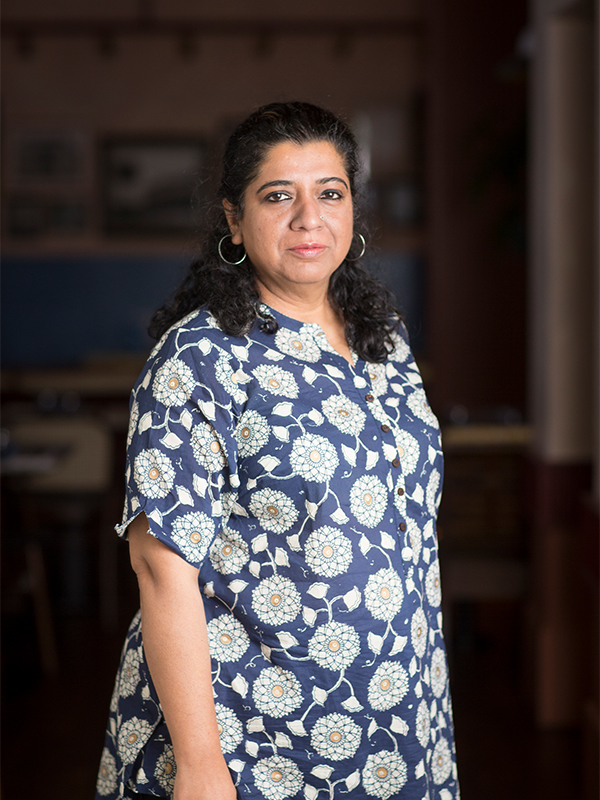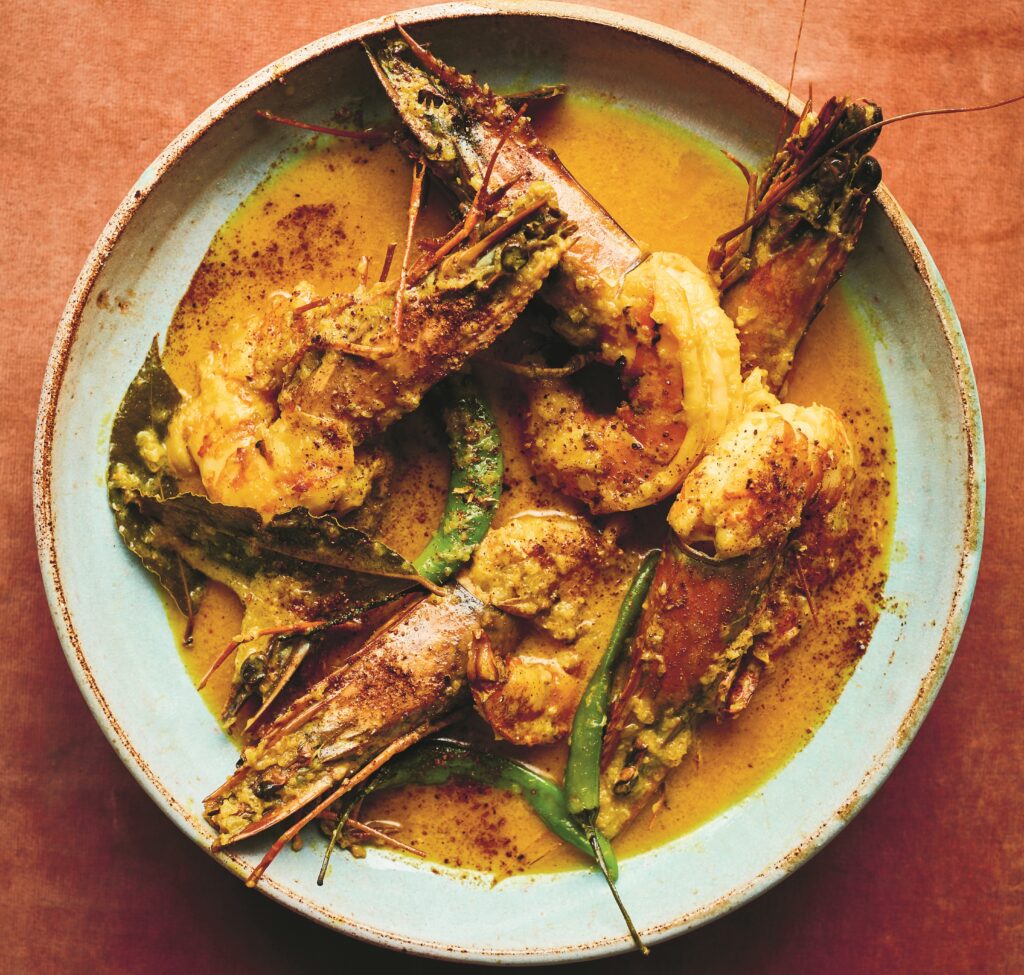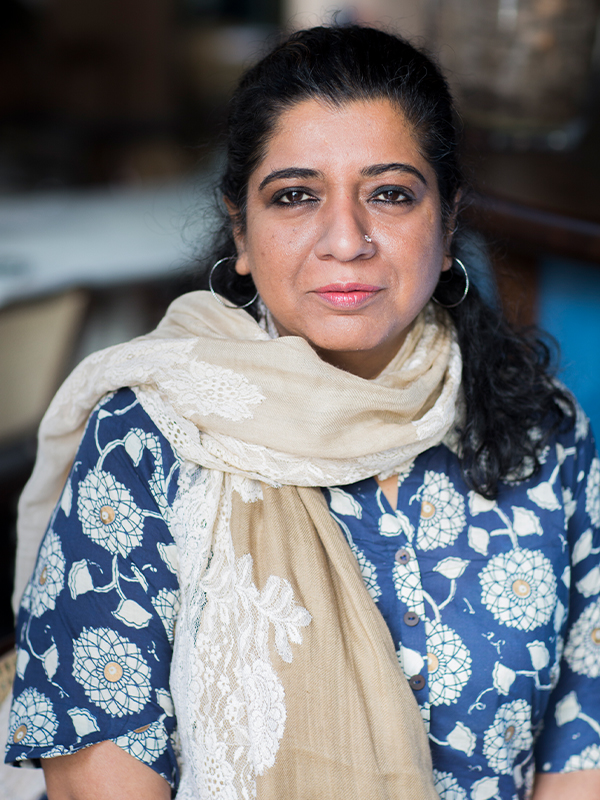Chef Asma Khan’s favorite line of poetry is from 11th century Persian poet Omar Khayyam: “Did the hand, then, of the Potter shake?”
“In Islam, we look at the Potter as God. Human beings are all made with clay and water,” Khan tells Sweet July. “The message is: You are created in his mold. His hands didn’t shake when you were created. You will shine and you will conquer the world.”
This poem is a guiding light in Khan’s deeply political culinary philosophy. Khan, who was featured on Netflix’s Chef’s Table and is the owner of Darjeeling Express in London (now a pop-up in Pembroke as they await a new location), focuses much of her work on the history of South Asia and the empowerment of women everywhere. Her kitchen staff consists of all South Asian women with no formal culinary training from India, Pakistan, Bangladesh, Sri Lanka, Nepal and Afghanistan.
“How come in almost every household, women are the ones cooking,” Khan says. “But in almost every restaurant, it is the men who get the fame?”
Khan also works with the Lotus Flower, a non-profit organization based in Kurdistan and Iraq, that helps women and girls who were victims of ISIS. Khan helps train these women and girls to become chefs and to rediscover their Yazidi culinary traditions that were lost when they were kidnapped. “I am sowing the harvest that I will not reap,” says Khan. “You need to weather it out; you need to grow it so that someone else will be free.”

Ammu by Asma Khan

Photo: Urszula Soltys
Khan, who is Muslim and Bengali, mostly highlights the food of Bengal in her work. Bengal is near the hot and humid Ganges Delta, so Khan says the food is very seafood-based, light, fragrant and delicate. To cleanse the fish before cooking, Bengali cooks will rub antibacterial turmeric and salt onto the fish and marinate it for 30 minutes. The result is flavorful, fresh and sweet seafood, like the tiny kechki maach (minnow fish)—fried simply with green chilis and mustard oil.
The seafood dish that reminds Khan most of her family is malaikari, made with Baagdaa Chingri—huge shrimp similar to tiger prawns. Sometimes it’s made with Golda Chingri, or lobsters.
Malaikari has a history of resistance. For Khan, it is a sacred dish, connected to the exploitation of indentured Bengali laborers who were taken by the British to the Malay Peninsula (Southern Thailand and the Southernmost tip of Myanmar) to build railways.
“If the laborers survived, they came back,” says Khan. “They were no longer enslaved. They came back to freedom and they brought coconut milk from Malaya. The Bengali families made Malai curry—the grandest dish—to celebrate the return. It’s a dish of resilience. You can crush our people. But we will rise again and again.”
Get Khan’s recipe for Golda Chingri Malaikari below!
Plus: Looking for the perfect wine to pair with this dish? Sweet July’s wine consultant Julia Coney suggests Grüner Veltliner. Coney says, “This is Austria’s most planted white grape variety. It’s a grape that can range in flavors from spicy to fruity and goes with various dishes with lots of spices and seasonings from delicate to heavy and everything in between. A white wine that should be on your table year round.”

RECIPE:
Asma Khan’s Golda Chingri Malaikari
Serves 6 people
INGREDIENTS
1 kg large raw prawns
2 tsp ground turmeric
2 tsp salt
2 onions
2.5-cm piece of cassia bark
2 green cardamom pods
2 cloves
4 tbsp ghee
2 tbsp vegetable oil
2 bay leaves
2 tbsp ginger paste
1 tbsp garlic paste
2 tsp mild chilli powder
100 ml warm water
800 ml thick coconut milk (tinned)
3 green chillies
1/2 tsp sugar
Cooked rice, to serve
INSTRUCTIONS
- Rinse the prawns and remove the shells from the bodies but keep the heads on. Mix half the turmeric and salt, and rub all over the prawns; set aside.
- Put the onions in a food processor and blitz to a paste; set aside.
- Dry roast the cassia bark, cardamoms and cloves in a heavy-based pan over a low heat. As soon as the tips of the cloves start to swell and become a lighter shade of brown, immediately tip the spices onto a plate to cool. When the spices are cool, grind in a spice grinder. For this recipe, you will only need 1 teaspoon. You can store any extra in a jar or in a small pouch of foil for about six weeks and use in recipes that call for garam masala.
- Put a deep pan over a medium–high heat. Add the ghee and oil, then fry the prawns one at a time; when you pick up each prawn, give it a gentle shake to get rid of any liquid before you add it to the oil. Do not overcook the prawns: cook them quickly on both sides until they just turn opaque. Using a slotted spoon, transfer them to a plate as they are done.
- To the ghee and oil remaining in the pan, add the onion paste and cook for 10 minutes. Add the bay leaves and the ginger and garlic pastes, the chilli powder, and the remaining turmeric and salt—cook for 3–5 minutes until the raw smell of the ginger and garlic has gone. Add the warm water and bring to a boil, then lower the heat and simmer until the oil comes to the surface, stirring to prevent the paste from sticking to the base of the pan.
- Add the coconut milk and green chillies and bring back to a boil, then simmer, uncovered, for about 20 minutes, until thickened.
- Add the prawns, lower the heat, cover and simmer for 5 minutes. Remove the lid, sprinkle in the sugar and 1 teaspoon of your garam masala—and mix well. Serve with rice.







